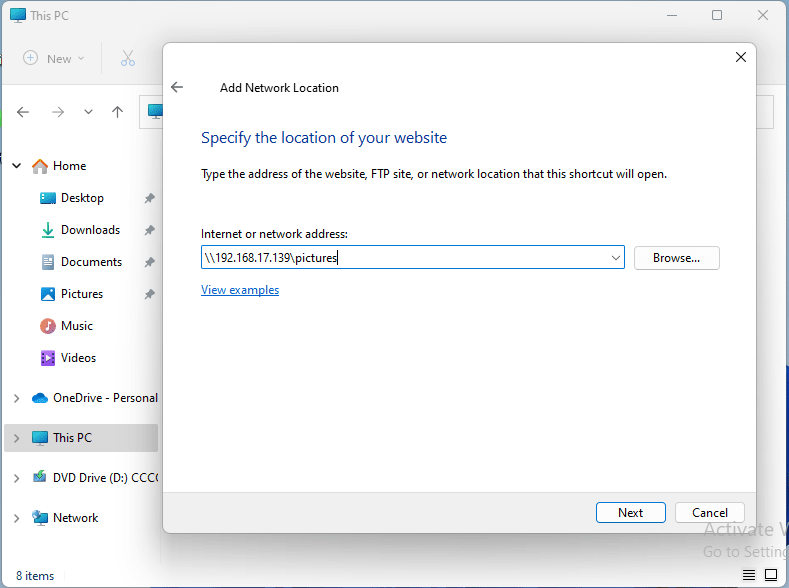How To Install Samba on Fedora 40

Samba is a powerful open-source software suite that enables seamless file and printer sharing between Linux and Windows systems. It allows Linux users to access and share resources with Windows machines on the same network, making it an essential tool for cross-platform compatibility. In this article, we will guide you through the process of installing and configuring Samba on Fedora 40, one of the most popular Linux distributions known for its stability and user-friendliness.
Prerequisites
Before we dive into the installation process, ensure that your Fedora 40 system meets the following requirements:
- A fresh installation of Fedora 40
- Administrative privileges (sudo access)
- A stable internet connection
It’s always a good practice to update your system packages to their latest versions before installing new software. Open a terminal and run the following command:
sudo dnf updateStep-by-Step Installation Guide
Step 1: Update System Packages
Keeping your Fedora 40 system up to date is crucial for maintaining stability, security, and compatibility. To update all installed packages, execute the following command in the terminal:
sudo dnf updateThis command will fetch the latest package information from the repositories and upgrade any outdated packages to their latest versions. It may take a few minutes, depending on the number of updates available.
Step 2: Install Samba
With the system updated, we can now proceed to install Samba. Fedora 40 includes Samba in its official repositories, making the installation process straightforward. To install Samba and its client utilities, run the following command:
sudo dnf install samba samba-clientThe samba package provides the core Samba server components, while samba-client includes the necessary client tools for accessing Samba shares from other systems. Confirm the installation when prompted, and wait for the process to complete.
Step 3: Configure Firewall
By default, Fedora 40 comes with a firewall enabled to protect your system from unauthorized access. To allow Samba traffic through the firewall, you need to add the Samba service to the firewall rules. Execute the following commands:
sudo firewall-cmd --permanent --add-service=samba
sudo firewall-cmd --reloadThe first command permanently adds the Samba service to the firewall rules, while the second command reloads the firewall configuration to apply the changes. This ensures that Samba can communicate with other systems on the network.
Step 4: Configure Samba
Samba’s configuration file, smb.conf, is located in the /etc/samba/ directory. To configure Samba, open this file using a text editor with sudo privileges:
sudo nano /etc/samba/smb.confThe configuration file is well-documented with comments explaining each option. For a basic Samba setup, you can append the following lines at the end of the file:
[global]
workgroup = WORKGROUP
security = user
[shared]
path = /srv/samba/share
read only = no
guest ok = yesLet’s break down each configuration parameter:
[global]: This section contains global settings that apply to the entire Samba server.workgroup: Set this to the workgroup name of your Windows network. The default is usually “WORKGROUP”.security: This parameter determines how Samba handles user authentication. Setting it to “user” requires clients to provide a valid username and password to access shares.[shared]: This section defines a specific shared directory.path: Specify the directory path you want to share. In this example, we’ll use/srv/samba/share.read only: Setting this to “no” allows write access to the shared directory.guest ok: Setting this to “yes” allows guest access without authentication. Modify this based on your security requirements.
After making the necessary changes, save the file and exit the text editor.
Step 5: Create a Shared Directory
Now that Samba is configured, let’s create the directory we specified in the configuration file. In this example, we’ll create /srv/samba/share. Run the following commands:
sudo mkdir -p /srv/samba/share
sudo chmod -R 0755 /srv/samba/share
sudo chown -R nobody:nobody /srv/samba/shareThe first command creates the directory structure, the second command sets the appropriate permissions (read and execute for everyone), and the third command assigns ownership to the “nobody” user and group. Adjust the permissions and ownership based on your specific requirements.
Step 6: Start and Enable Samba Services
With the configuration and shared directory in place, it’s time to start the Samba services. Fedora 40 uses systemd to manage services. Execute the following commands to start and enable the Samba services:
sudo systemctl start smb nmb
sudo systemctl enable smb nmbThe smb service handles file and printer sharing, while the nmb service is responsible for NetBIOS name resolution. Starting these services makes Samba operational, and enabling them ensures that they automatically start on system boot.
Testing and Verification
Verify Configuration
Before accessing the Samba share from other systems, it’s a good idea to verify the configuration file for any syntax errors. Run the following command:
testparmIf the configuration is valid, the command will display a summary of the Samba configuration. If there are any errors, review the configuration file and make the necessary corrections.
Accessing the Share from Windows
To access the Samba share from a Windows machine, follow these steps:
- Open File Explorer and click on “This PC” in the left sidebar.
- In the address bar, enter the network path of your Samba server in the format
\\server-ip\shared, replacing “server-ip” with the IP address of your Fedora 40 machine. - If prompted for credentials, enter the username and password configured in the Samba configuration file.
- Once authenticated, you should see the shared directory and be able to access its contents.

Troubleshooting Common Issues
SELinux Context Issues
If you encounter permission denied errors when accessing the Samba share, it could be due to SELinux context issues. To resolve this, run the following command:
sudo chcon -R -t samba_share_t /srv/samba/shareThis command sets the appropriate SELinux context for the shared directory, allowing Samba to access it properly.
Firewall Misconfigurations
If you have trouble accessing the Samba share from other systems, double-check your firewall settings. Ensure that the Samba service is allowed through the firewall by running:
sudo firewall-cmd --list-servicesIf Samba is not listed, add it using the commands mentioned in Step 3 of the installation guide.
Congratulations! You have successfully installed Samba. Thanks for using this tutorial for installing Samba on your Fedora 40 system. For additional help or useful information, we recommend you check the official Samba website.